Oral Cancer Rehabilitation: Practical Tips and Best Practices for Prosthetic, Obturator, and Speech Aid Management
Oral cancer rehabilitation is essential for restoring function and quality of life in patients undergoing maxillectomy procedures. These patients often experience oronasal communication, food leakage, hypernasal speech, and swallowing difficulties, requiring a systematic, multidisciplinary approach. Rehabilitation typically progresses through phased interventions, beginning with preoperative planning, followed by surgical and interim obturators, and culminating in a definitive prosthesis. Obturators play a vital role in separating the oral and nasal cavities, promoting wound healing, improving speech and swallowing, and restoring facial aesthetics. Successful outcomes depend on precise prosthetic design, understanding maxillary anatomy, and managing tissue changes due to surgery or radiation therapy, combined with patient education and collaboration between dental professionals, oncologists, and speech therapists.
Related Content
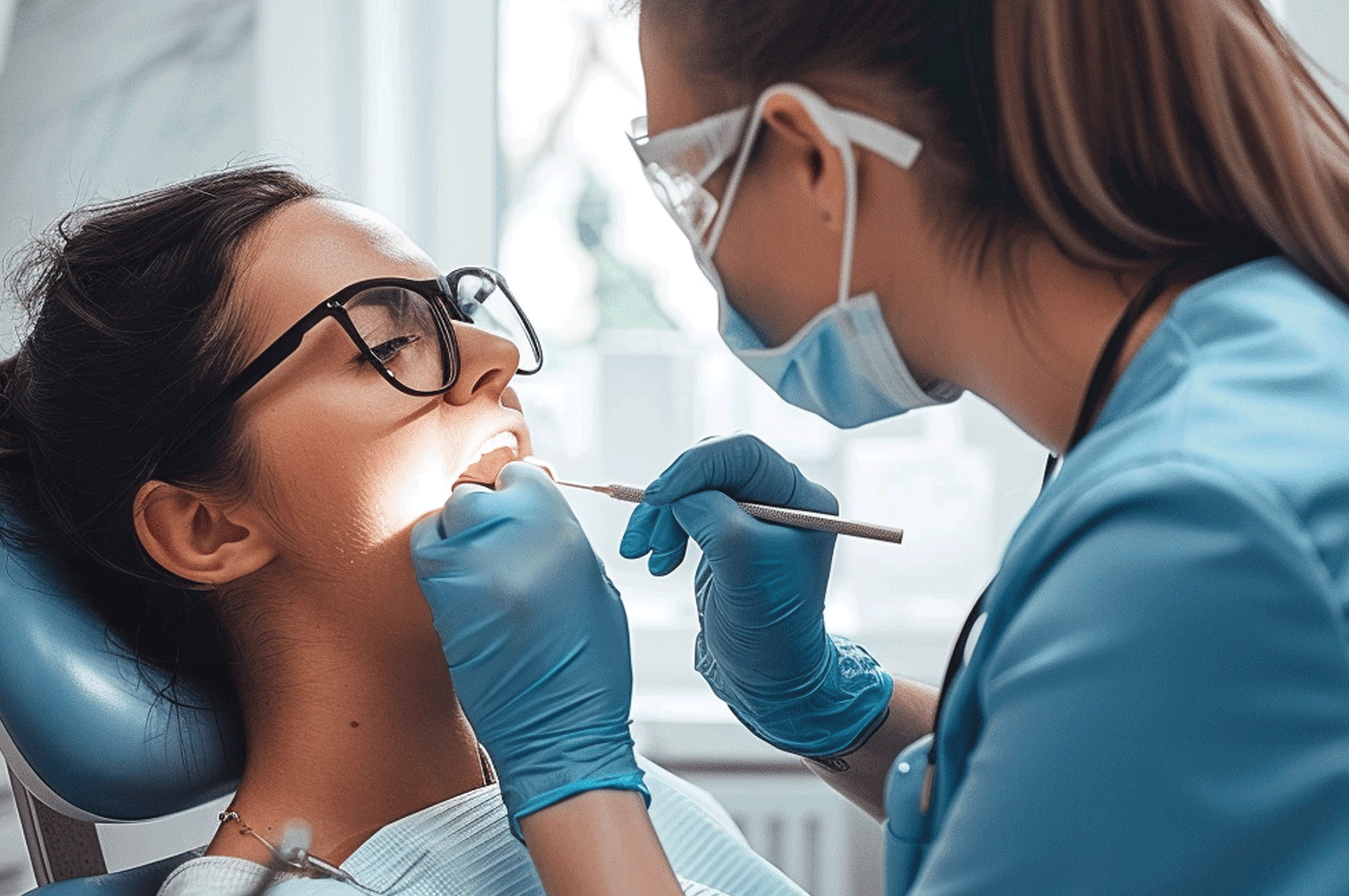
Smile Therapy - The Expanding Role of Dentists in Psychosocial Health
Every time dentists rehabilitate a smile, they do more than just refine esthetics or improve function. They directly impact a patient’s neurobiology by providing a confident smile. This World Smile Day, it is time to reflect on the role dentists play in prescribing this “natural medicine” every day. The Science of Smiling as Medicine Many people suppress their smiles due to issues like caries, periodontal disease, malocclusion, or tooth loss. It not only lowers their confidence but also denies them access to one of the body’s natural stress-relief mechanisms. Real smiles can stimulate endorphins, dopamine, and serotonin, which are all natural neurochemicals that elevate mood and build resilience1. By restoring a patient’s smile, dentists help unlock this biological response, making every treatment a step toward better mental health. Dentists who emphasise the benefits of a confident smile can achieve better patient motivation and higher case acceptance. Growing Demand for Aesthetic Dentistry A 2022 survey reported that over 90% of dentists believe demand for aesthetic dental procedures has increased in recent years2. Globally, the cosmetic dentistry market is going to grow steadily through 2032, and we will witness more patient demand for veneers, whitening, clear aligners, and minimally invasive cosmetic interventions. This trend is more than just market data, it is a signal and an opportunity. For dental practitioners, it highlights the chance to position smile rehabilitation as more than a cosmetic service. It is time to raise awareness among patients about the importance of a smile as an essential part of psychosocial well-being and stress reduction. This evolution from strictly disease-based healing to holistic healing helps dentists position themselves as providers of both oral and psychosocial well-being. Techniques That Redefine Smile Rehabilitation Latest advances in technology have made aesthetic and restorative dentistry procedures more precise and less invasive. These innovations not only fine-tune treatment outcomes but also reduce stress for both dentists and patients. Digital Smile Design (DSD) & AI Simulation Virtual mock-ups can help patients have a look at possible outcomes, which increases overall case acceptance3. No-Prep and Minimal-Prep Veneers Nowadays, the ceramics are ultra-thin, which enhances esthetics with minimal enamel reduction. It preserves the natural structure and reduces treatment time. Clear Aligners and Cosmetic Orthodontics Aligners are a new addition to the field of orthodontics. They are discreet and align teeth without affecting day-to-day life or looks. Laser Dentistry and Soft Tissue Procedures Gum lifts, contouring, and gingival reshaping can now be performed with greater comfort and faster healing. CAD/CAM and 3D Printing Same-day restorations and precisely milled prosthetics have reduced the treatment time while improving the fit4. Together, these technologies align with modern patients’ expectations for convenience, precision, and comfort—making smile rehabilitation even more impactful. Dentistry as a Stress-Relief Prescription The latest inventions in aesthetic dentistry are having their moment. Patients with new smiles can enjoy the neurochemical benefits of lowered stress hormones, boosted immunity, and improved mood. For dentists, every intervention becomes a dual prescription: restoring oral structures while enabling patients to access the body’s natural stress-relief medicine. Final takeaway On World Smile Day, the message is clear: smiles are the best stress-relief medication, and dentists prescribe them daily. As aesthetic demand grows and techniques advance, the dental profession is bridging the gap between oral rehabilitation and psychosocial wellness. Every crown placed, every veneer bonded, and every alignment corrected is more than a dental service—it is a prescription for confidence, resilience, and stress-free living. References 1. Cross MP, Acevedo AM, Leger KA, Pressman SD. How and why could smiling influence physical health? A conceptual review. Health Psychol Rev. 2023;17(2):321-43. 2. Abbasi MS, Lal A, Das G, Salman F, Akram A. Impact of social media on aesthetic dentistry: General practitioners' perspectives. Healthcare (Basel). 2022;10(10):2055. 3. Liu X, Sutanto. The Role of Digital Smile Design in Enhancing Aesthetic Dentistry Outcomes. Prim Indones J Public Health. 2025 May 8;2(2):72. 4. Alaoffey AS, Asiri MA, Alhazmi TAA, Alshetaiwi AA, Almobarak AM, Alqasir YH, Algazlan SA, Alouf HS, Zakri HHM, Al-Amri FG, Alshammari AH, Al Mutairi MS, Alharbi IAL, Aldawsari JF, Alharbi FN. Digital Dentistry: Transforming Diagnosis and Treatment Planning through CAD/CAM and 3D Printing. Egypt J Chem. 2024 Dec;67(13):1177-90.
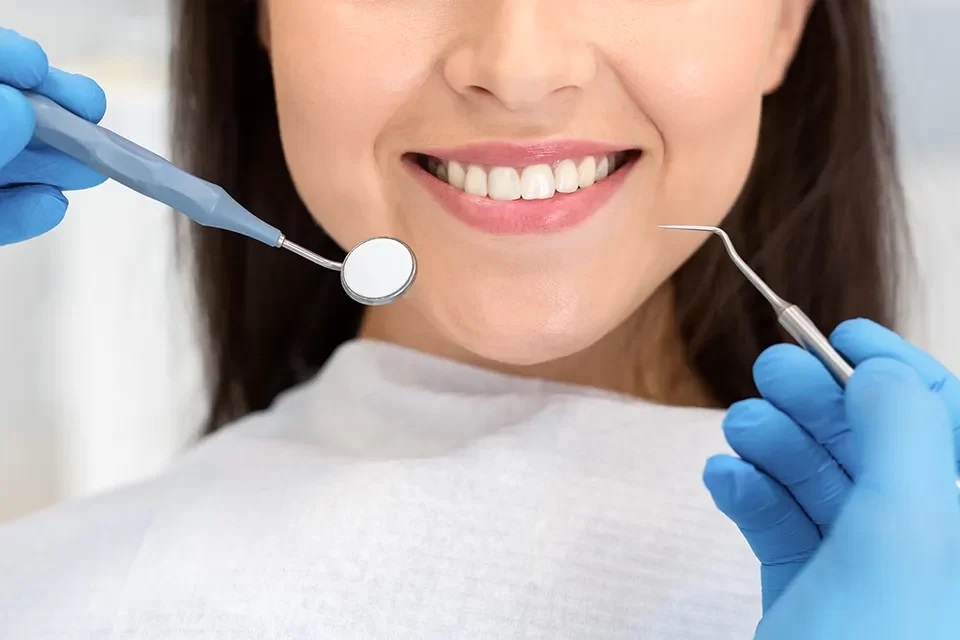
Crown Lengthening: Clinical Applications and Therapeutic Benefits
Ever struggled with a tooth that just won’t give you enough structure for a perfect restoration or smile? That’s where crown lengthening comes in. This versatile procedure helps you reveal more of the tooth—by repositioning the gingiva, removing bone, or both—so you can restore function and aesthetics with confidence. The key? Preserving biological width and keratinized tissue while giving your patient a lasting, healthy outcome.1 This procedure isn’t just functional; it also looks good and provides therapeutic advantages. Let’s break it down. Clinical Applications for Crown Lengthening 1. Restorative Needs Subgingival fractures or decay complicate restorations, risking margin placement and biologic width violation. Crown lengthening comes to the rescue, exposing sound tooth structure for predictable, long-lasting, and esthetic restorations. This step is essential for the long-term success of crowns, bridges, and other restorations. Skipping it can lead to chronic inflammation, bone loss, and treatment failure. 2 2. Subgingival Caries Management When decay extends below the gumline, a simple filling isn’t enough. Surgical crown lengthening provides proper access for caries removal and precise margin placement while preserving periodontal health. Techniques like gingivectomy or osseous resection with an apically positioned flap reposition the gum, expose sound tooth structure, and protect the biologic width—ensuring long-term functional and esthetic success.3 3. Esthetic Crown Lengthening Patients with a “gummy smile” or altered passive eruption often seek a more balanced smile. Esthetic crown lengthening reshapes gingival contours, corrects tooth proportions, and boosts patient confidence. Studies show gingival margins remain stable at 3, 6, and 12 months, with minimal rebound and only subtle papillary changes. The result: natural emergence profiles and improved crown appearance.4 A precise, predictable procedure—ideal for integrating into comprehensive smile design. Case Example7: A 19-year-old male with uneven gums in the upper front teeth underwent aesthetic crown lengthening. Using flap surgery and careful osteoplasty, the gingival contours were corrected, creating an ideal emergence profile. Postoperative follow-up at one year showed stable gingival margins, enhanced aesthetics, and improved smile harmony—demonstrating how ACL can deliver both functional and cosmetic benefits in young adults. Therapeutic Benefits Preservation of Periodontal Health: Failure to respect biologic width often leads to inflammation, attachment loss, and chronic periodontitis. By surgically exposing ~3 mm of supra-alveolar tooth structure and ensuring a 1.5–2 mm ferrule, crown lengthening maintains biologic width and safeguards periodontal tissues. Longitudinal studies confirm margin stability and periodontal health when proper dimensions are respected. 5 Long-Term Stability of Restorations: Crown lengthening enhances restorative predictability by creating a ferrule effect, exposing hidden caries or root fractures, and ensuring precise margin placement. This not only improves retention but significantly extends the survival of complex restorations. 2 Esthetic Harmony: In the anterior zone, therapeutic crown lengthening balances gingival contours, corrects altered passive eruption, and improves crown-to-root ratios—delivering smiles that are both functional and esthetic. Patient-reported outcomes consistently highlight increased satisfaction.6 Clinical Pearls Favor crown lengthening over orthodontic extrusion when multiple adjacent teeth are involved. In esthetic cases, careful flap design and osseous recontouring help preserve papillae and avoid black triangles. Communicate to patients that stability is gradual—gingival margins typically stabilize over 3–12 months with minimal rebound. Conclusion Crown lengthening is more than a surgical adjunct—it is a biologically sound, restorative-enabling, and smile-enhancing procedure. With thoughtful case selection and precise execution, it ensures durable restorations, periodontal stability, and satisfied patients. References: Soolari A, Obiechina N. Esthetic and Functional Crown Lengthening Surgery-Review Article. J Med-Clin Res & Rev. 2023;7(1):1-4. Qali M, Alsaegh H, Alsaraf S. Clinical considerations for crown lengthening: a comprehensive review. Cureus. 2024 Nov 3;16(11). Ganji KK, Patil VA, John J. A comparative evaluation for biologic width following surgical crown lengthening using gingivectomy and ostectomy procedure. International journal of dentistry. 2012;2012(1):479241. Carneiro VM, Gomes AM, Marinho MU, de Melo GS, Kasabji F, An TL, Stefani CM, Guimarães MD, Andrade CA. Dental and periodontal dimensions stability after esthetic clinical crown lengthening surgery: a 12‐month clinical study. Clinical Oral Investigations. 2024 Jan 5;28(1):76. Ranjitsingh GV, Jha P, Nikhil V. Crown lengthening in modern dentistry: clinical guidelines and considerations. J Conserv Dent. 2023;26(3):150-155 Huang D, Luo L, Lan X. Efficacy of crown lengthening for restoration of maxillary anterior tooth defects. American Journal of Translational Research. 2023 Jul 15;15(7):4649. Souza-Passaroni B, Vieira-Falabella ME, Mendonça-Falabella M. Alargamiento de Corona Estético: Reporte de Casos. International journal of odontostomatology. 2024 Jun;18(2):194-9.
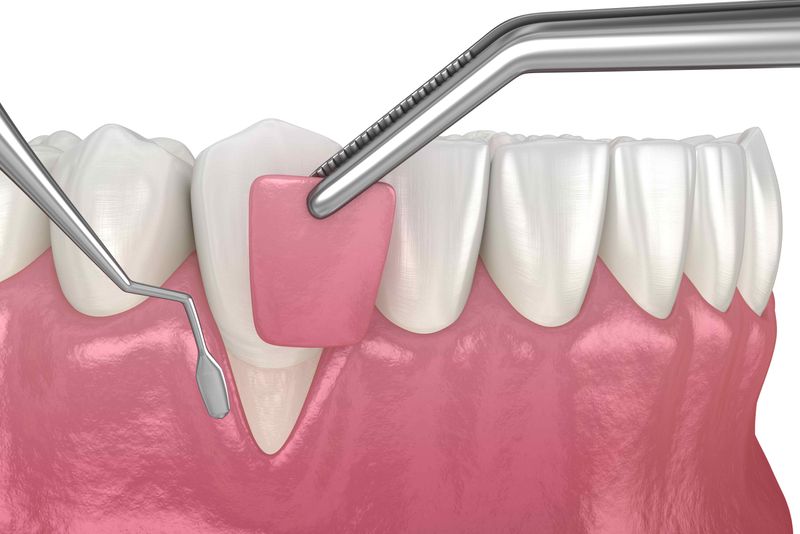
Crown Lengthening: Fundamental Concepts and Clinical Indications
Modern crown lengthening isn’t just about exposing tooth structure—it’s about knowing the exact indications and avoiding contraindications to ensure lasting, predictable results. Crown lengthening is more than a surgical trick to “make teeth longer.” In modern dentistry, it is a carefully planned procedure that blends biology, function, and esthetics. Exposing adequate clinical crown height while maintaining the biologic width preserves natural teeth. It also improves restorative outcomes and meets patient expectations1. Why Crown Lengthening Matters Short clinical crowns often lead to poor retention, weak ferrule, and challenging margin placement. The biologic width (now called supracrestal tissue attachment) averages 2.04 mm, composed of: Junctional epithelium: ~0.97 mm Connective tissue attachment: ~1.07 mm To avoid inflammation, bone loss and compromised esthetics maintain at least 3 mm between the restoration margin and the alveolar bone1. Crown lengthening re-establishes this biologic harmony, creating a predictable foundation for restorations. Indications You’ll See in Daily Practice Subgingival caries or fractures – for complete removal and restorative access1,2. Inadequate crown height – to achieve ferrule and prevent fracture1,2. Excessive gingival display / altered passive eruption – for esthetic correction4. Margin relocation – moving restorative margins into biologically safe zones3. Special cases – root surface perforations, cervical root resorption1,4. Contraindications to Keep in Mind1,5 Unfavorable crown-to-root ratio (<1:2). High furcation involvement – may expose furcations after surgery. Thin gingival biotype – risk of post-op recession. Non-restorable teeth – extraction is a better option. Inadequate tooth-to-arch alignment – may compromise occlusion or restorative outcomes. Risk to adjacent periodontium or aesthetics – Potential adverse effects on adjacent tissues or esthetic outcome. Inadequate attached gingiva – complicates flap design, stabilization, and suturing. Significant vertical maxillary excess – may require orthodontic treatment or orthognathic surgery. Beyond the Surgery Oral hygiene is the real key: Without plaque control, even the most technically perfect crown lengthening will fail. Respect esthetics: Especially in the anterior zone, crown lengthening must balance biologic gain with patient appearance. Patient-centered decisions: While implants are common, many patients want to retain their natural dentition. Crown lengthening often makes this possible. Bottom line Crown lengthening is not just a mechanical procedure. It’s a biologically respectful, evidence- based approach that enables restorations to last longer, look better, and function predictably. References Qali M, Alsaegh H, Alsaraf S. Clinical considerations for crown lengthening: a comprehensive review. Cureus. 2024 Nov 3;16(11). Hutomo DI, Sunarto H, Fitria AR. Crown Lengthening for Obtaining Biological Width in Dental Restoration: A Case Report. KnE Medicine. 2022 Apr 25:160-8. Geo TD, Gupta S, Gupta SG, singh Rana K. Is Deep margin elevation a reliable tool for cervical margin relocation?–A comparative review. Journal of Oral Biology and Craniofacial Research. 2024 Jan 1;14(1):33-8. Marzadori M, Stefanini M, Sangiorgi M, Mounssif I, Monaco C, Zucchelli G. Crown lengthening and restorative procedures in the esthetic zone. Periodontology 2000. 2018 Jun;77(1):84-92. Anggraini D, Silaban K, Nasution RO, Amalia M. Aesthetic Crown Lengthening for Gummy Smile Treatment: A Case Report. InTalenta Conference Series: Tropical Medicine (TM) 2025 Jul 31 (Vol. 2, No. 1, pp. 164-170).
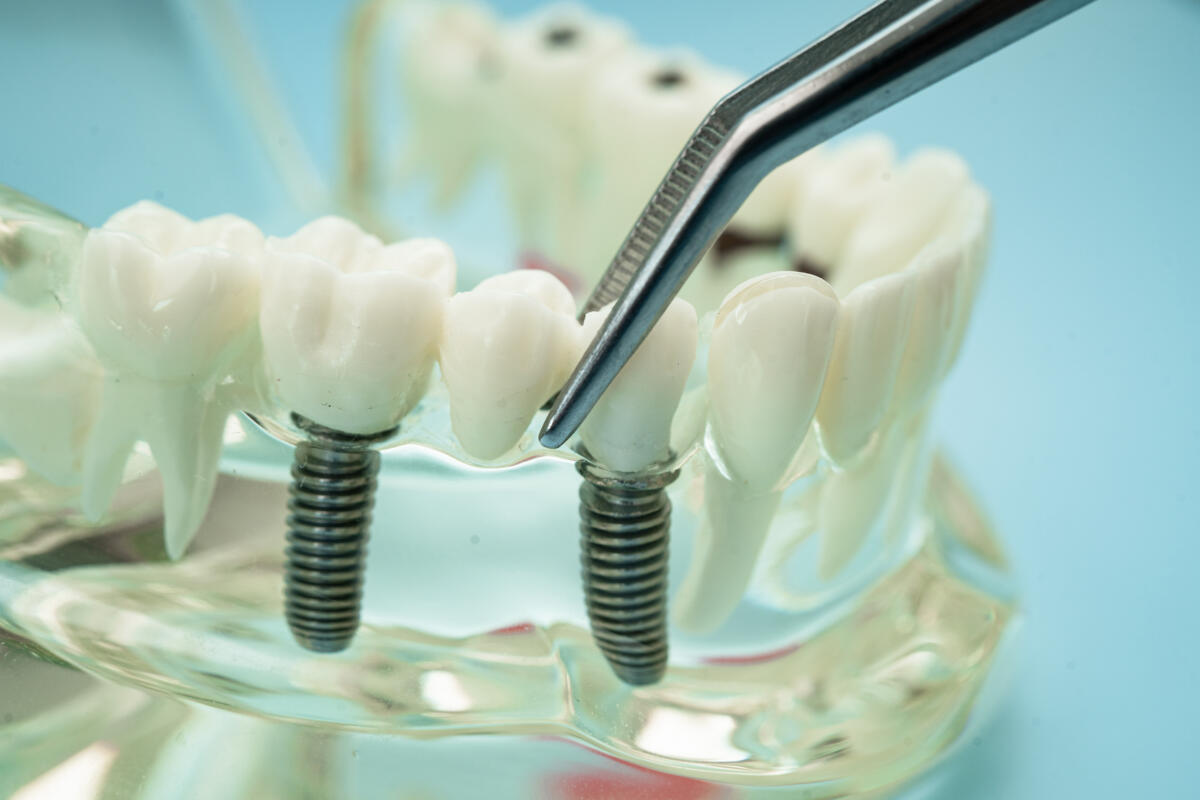
Crown Lengthening Procedure (CLP) - Clinical Implications in Esthetics & Retention
Crown lengthening is a periodontal surgical procedure performed to expose additional tooth structure for restorative or aesthetic purposes. It plays a vital role in preserving periodontal health by maintaining the biologic width, which includes the junctional epithelium and connective tissue attachment, totalling approximately 2.04 mm. Careful evaluation of factors such as probing depth, keratinised gingiva width, crown-to-root ratio, and the distance from cemento-enamel junction to bone is essential for treatment planning. Techniques like gingivectomy, undisplaced flaps, or apically displaced flaps are selected based on clinical and aesthetic needs.In aesthetic zones, precise gingival zenith positioning and harmony with the smile line are crucial, with a minimum healing period of 21 weeks before final restoration to ensure stability and predictability.
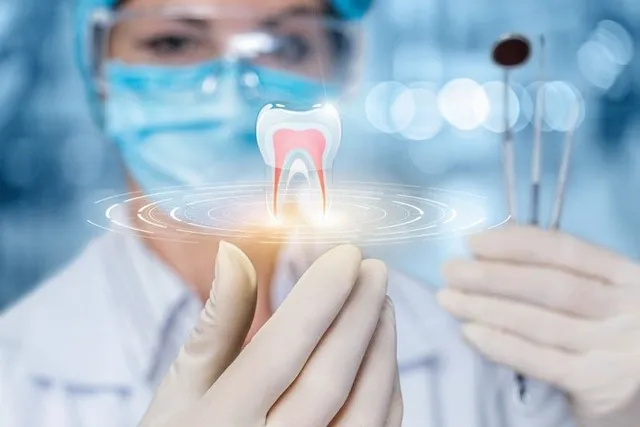
AI-Assisted Smile Design: The Smart Revolution in Aesthetic Dentistry
Smile design has always required an artistic eye and deep anatomical knowledge. But today, AI is augmenting that skillset and brings in unprecedented speed, accuracy, and patient engagement to the process. AI-assisted smile design isn’t science fiction anymore; it is a chairside reality now. From real-time smile simulations to precision planning aligned with facial anatomy, dentists now have access to tools that make aesthetic cases more predictable and profitable. But how does it really work? Let’s find out. What Is AI-Assisted Smile Design? AI-assisted smile design uses machine learning algorithms to analyze facial and dental data and automates the process of designing an aesthetic smile that matches the patient's natural features. Unlike traditional Digital Smile Design (DSD), AI tools can: Instantly detect over 60 facial and dental landmarks (lip line, midline, interpupillary line, gingival contours, etc.) Suggest optimized tooth shapes and positions based on large datasets of successful aesthetic cases. Provide dynamic 2D and 3D simulations of treatment outcomes1. Key Capabilities AI-powered tools can identify dental and facial landmarks with approximately 93% accuracy, which makes them far more consistent than manual identification2. Smile simulation generation in under 3 minutes. Integration with CAD/CAM and lab workflows3. How Does It Actually Work? Now that we have you with us, let’s see how the magic happens. 1. Facial & Dental Landmark Detection AI scans patient photographs or 3D facial scans and identifies anatomical landmarks using convolutional neural networks (CNNs). These include: Facial midline, interpupillary line, and smile curve Gingival margins and incisal edges Buccal corridors and lip symmetry 2. AI-Driven Smile Design Algorithms AI works on training sets from thousands of aesthetic cases, and suggests tooth shapes and gingival contours that match the patient’s facial typology. Many platforms provide a preloaded digital tooth library. 3. Real-Time Simulations The system renders a 2D or 3D smile simulation within minutes, which can be customised by either the clinician or the patient. These simulations can be exported directly to labs or printed as mock-ups4. Clinical Benefits: Why Should You Adopt AI? Here are a few solid pros you should consider - 1. Speed & Accuracy Manual digital smile designs can take as long as 45–60 minutes. AI systems reduce this to under 5 minutes with improved precision. 2. Enhanced Case Acceptance Seeing is believing. Studies show that patients who view their simulations achieved excellent esthetic outcomes compared with 78% in the conventional mock-up group, and they reported higher satisfaction scores5. 3. Seamless Integration with Lab Workflows Smile files are CAD-ready and compatible with most dental software systems, that helps reduce lab miscommunication and chairside rework. 4. Improved Interdisciplinary Planning AI-assisted digital smile design platforms now merge CBCT scans, facial surface scans, and intraoral STL models into one 3D ‘virtual patient’. It gives the dental practitioner a unified treatment plan for restorative, periodontal, and orthodontic needs with sub-millimeter precision, and lets you preview and perfect every aspect of the patient’s new smile before you ever pick up a handpiece. Limitations: Where AI Still Needs the Human Touch Clinical Scenario AI Strength Dentist’s Role Simple aesthetic enhancement High Review and approve Complex asymmetry or TMD Moderate Manual correction needed Gingival recontouring planning Low Periodontal expertise needed Full-mouth reconstructions High (with 3D data) Must lead occlusion design AI enhances, but does not replace, clinical judgment. The clinician’s eye is still essential, especially in complex or interdisciplinary cases. Top Tools & What to Look For When choosing an AI smile design platform, consider these features: Feature Why It Matters Facial & dental landmark AI Ensures symmetry and precision Real-time 3D simulation Patient engagement & better consent CAD/CAM and lab integration Workflow efficiency and predictable outcomes Cloud-based storage & sharing Collaboration with labs or specialists Customizable smile library Tailored to regional/national smile preferences Popular Tools: 3Shape Smile Design, DSDApp (by Coachman), Smile cloud, IvoSmile, SmileFy Final Takeaway AI isn’t replacing cosmetic dentists; rather, it is empowering them. The blend of human artistry and machine precision means more predictable outcomes, higher patient trust, and faster workflows. Whether you are a seasoned aesthetic dentist or just getting started with smile makeovers, AI can transform how you plan, present, and perform. References Jreige CS, Kimura RN, Segundo ÂRTC, Coachman C, Sesma N. Esthetic treatment planning with digital animation of the smile dynamics: a technique to create a 4-dimensional virtual patient. J Prosthet Dent. 2022 Aug;128(2):130–138 Alahmari M, Alahmari M, Almuaddi A, Abdelmagyd H, Rao K, Hamdoon Z, et al. Accuracy of artificial intelligence-based segmentation in maxillofacial structures: a systematic review. BMC Oral Health. 2025 Mar 7;25:350. Revilla-León M, Gómez-Polo M, Vyas S, Barmak AB, Özcan M, Att W, Krishnamurthy VR. Artificial intelligence applications in restorative dentistry: a systematic review. J Prosthet Dent. 2022 Nov;128(5):867–875. doi:10.1016/j.prosdent.2021.02.010. PMID: 33840515. Chen YW, Stanley K, Att W. Artificial intelligence in dentistry: current applications and future perspectives. Quintessence Int. 2020;51(4):269–280 Luniyal C, Shukla AK, Priyadarshi M, et al. Assessment of patient satisfaction and treatment outcomes in digital smile design vs. conventional smile design: a randomized controlled trial. J Pharm Bioallied Sci. 2023 Dec;16(Suppl 1):S669–S671.

From Dentist to CEO: What Dental College Never Taught You
A dentist spends years mastering root canals, crown preps, and radiographic interpretation. But what about other aspects of running a practice, like revenue optimization, team management, or clinic operations? Dental education in India, even at top institutions, is still heavily focused on clinical proficiency, not practice management. When you set up your clinic, these values become even more relevant. You are no longer just a doctor; you become a business owner. A CEO. And in today’s hyper-competitive dental market, that shift is no longer optional. Why You Must Make the Dentist-to-CEO Shift? In India, over 80% of private dental clinics are solo or small setups. That means the dentist is the business1. However, most clinics plateau at a certain income level. This is not because the dentist isn’t skilled, but simply because the business side is neglected. A 2022 survey of 100 dentists from Chennai revealed that 61% felt practice management should be an integral part of the undergraduate curriculum, and over half believed their practice success would improve if such training were mandatory2. Successful clinic owners treat their practice like a healthcare business: They measure performance They train and retain staff They systemise operations They plan revenue streams proactively If you are only focused on treating patients and keep ignoring finances, systems, and leadership, you will burn out or stagnate. Let’s help you flip the script. 1. Know Your Numbers Run your clinic with data. Start by tracking 5 essential metrics every month3: Metric Ideal Benchmark Monthly revenue per chair ₹2–3 lakhs/chair Case acceptance rate > 60% Patient retention rate > 70% Chair occupancy rate 80%+ Treatment plan conversion > 50% Don’t overcomplicate it. Use a simple Google Sheet or clinic software like: Practo Ray Docpulse Even a basic Excel dashboard can reveal where you are leaking money. 2. Build Systems That Work Without You How much of your day is wasted answering repetitive staff questions, checking appointments manually, or following up on missed payments? These are symptoms of a missing system. Standard Operating Procedures (SOPs) to create: New patient registration & consent process Treatment explanation and fee presentation Lab coordination workflows Sterilisation checklist Post-op and recall communication protocol Pro Tip: Use WhatsApp groups for team SOP reminders, or create short video SOPs on your phone, which makes it easy for new staff to follow. Evidence backs this up: A 2024 Frontiers in Education study recommends structured interprofessional modules in dental education to train students in leadership, systems thinking, and process-driven practice management4. 3. Lead Your Team Like a CEO, Not a Boss The Indian dental workforce is often young, undertrained, and high-churn. That’s why leadership matters more than micromanagement. Your team does not always need you to do everything. They need: Clear roles and daily tasks A growth path Regular appreciation and feedback, which can be a weekly check-in A culture where patients are the priority, not just “completing the case” Action Step: Assign a clinic operations champion, even a part-time one will do. They can handle stock, follow-ups, and non-clinical issues. This frees up your headspace. 4. Take Control of Your Finances Even if you outsource accounting, you should own your numbers. These are key financial insights to track monthly: Gross income vs net profit Staff salaries as a % of revenue (aim for <30%) Lab & material costs (keep under 12–15%) High-value vs low-value procedures (so you market wisely) Along with that, budget monthly for: Equipment maintenance Staff training Marketing (even ₹5,000–10,000/month goes far) Tools you can use: Tally or Zoho Books for basic accounting Your CA can help generate monthly P&L reports. 5. Block Time for CEO Work If you are in the chair from 9 AM to 9 PM, you are working in the business, not on it. You have to block 2 hours a week for CEO tasks like: Reviewing numbers Planning local promotions Meeting vendors, marketers, or legal advisors Researching new tech (e.g. aligners, CAD/CAM, intraoral scanners, AI software) You can always use Google Calendar or Notion to schedule & track. Weekly CEO Routine Task Time Tool Review revenue & new patients 20 min Practice software/Excel Weekly team huddle 15 min In-person/WhatsApp Check inventory & lab coordination 15 min Checklist Marketing brainstorm/outreach 30 min Canva, Google My Business Long-term planning 30 min Notebook/whiteboard Final Takeaway You must believe that you are not just a doctor, but a dental entrepreneur. Clinical skill may bring in patients, but systems, strategy, and leadership are what keep them coming back and grow your income. The best part? You really don’t need an MBA. You need a mindset shift, a weekly discipline, and the willingness to learn what wasn’t taught in dental college. References Multani HS. India’s dental care market: current status and the way forward. Times of India [Internet]. 2021 Sep 9 [cited 2025 Jun 27]. Aathira CM, Jeevanandan G, Govindaraju L. Need for practice management in undergraduate dental program – a cross sectional survey among the dentists. J Adv Pharm Technol Res. 2022 Dec 30;13(Suppl 2):S453–7. American Dental Association. Measuring success: dental practice management. [Internet]. Chicago: ADA; [cited 2025 Jun 27]. Sujir N, Naik DG, Mohammed CA, Jain A, Uppoor A. Introducing dental practice management in the undergraduate curriculum through an interprofessional module: experience from an Indian dental school. Frontiers in Education. 2024; Nov 11

5 Biggest Revenue Leaks in Dentistry and How to Fix Them
Even if a dental practitioner is amazing at spotting a crack in a patient’s tooth, what about the cracks in the dental practice? Many dental practitioners work tirelessly to deliver outstanding clinical care, yet overlook the silent money leaks that drain profitability month after month. Hidden revenue leaks might be to blame. Let’s shed some light on them and stop the drip before it turns into a flood. Here is the list of the 5 biggest revenue leaks: Leak 1: Inefficient Scheduling and Open Chair Time Industry data show that practices can boost production by up to 25–30% simply by tightening scheduling gaps and reducing no‑shows1. Solution: Audit your past 6 months to track every empty chair slot and measure average patient wait times. Invest in a modern, automated recall and confirmation system. Train your front‑desk team to offer the next available appointment at checkout and don’t wait for patients to call in. Leak 2: Incomplete Treatment Acceptance Even when you present the ideal treatment plan, a significant share of patients never follow through. This means you leave real revenue on the table. In a recent survey of 771 patients recommended for endodontic or restorative therapy, only 68.5 % actually underwent the treatment, which accounts for 30% of lost treatment opportunities2. Solution: Use high-impact visuals and before-and-after case photos in every consultation. Practice mock consultations with your team so they can smoothly turn around “I’ll think about it” statements. Offer flexible payment plans, such as in-house financing or third-party options, to remove cost barriers. Leak 3: Outdated or Ineffective Fee Structures Henry Schein’s Fee Balancing (HSPA) analysis demonstrates that practices that update their fees every 12 months can see an increase of almost 8–15 per cent in annual revenue, just by aligning fees with market percentiles and inflation3. Solution: Calibrate your fees annually according to regional and national data. Communicate fee changes clearly and focus on the value and quality you deliver, and not just the price. Bundle popular services, like hygiene and periodic exams, into preventive‑care memberships. Leak 4: Insurance Overdependence and Write‑Offs Only an estimated 10–15% of Indian dental patients carry any form of dental rider on their health insurance policies. Practices that accept and process these claims still see around 25% of billed amounts written off due to non-covered procedures, claim rejections, or administrative errors4. Solution: Run a 90‑day claim audit. Identify the insurers and procedure codes with the highest rejection rates and refine your submission protocols. Educate patients and clearly explain which services are and aren’t covered, so they are prepared for out‑of‑pocket costs rather than surprised by a write‑off. Streamline your systems and consider accepting only a few plans which have reasonable coverage and fast turnaround. Other than that, communicate about fee‑for‑service for treatments outside those networks. Leak 5: Missed Opportunities for Ancillary Services Data from the Journal of the American Dental Association show that practices that actively market cosmetic and wellness services see a 15–20% uplift in ancillary revenues within a year5. Solution: Train your hygiene team to identify cosmetic concerns, like staining or minor misalignment and discuss options. Create simple, in‑office brochures and digital content on whitening, clear aligners, and wellness plans. Run periodic “smile makeover” events or limited‑time offers to drive patient interest. Final Takeaway Plugging revenue leaks isn’t about squeezing more out of patients; it is about delivering more value and getting paid fairly for the quality you provide. Start small by addressing one leak at a time, and you will see steady growth in both revenue and patient satisfaction. References Levin RP. Higher production and long‑awaited stability: The 2024 DE/Levin Group Annual Practice Survey [Internet]. Dent Econ; 2024 May 8[cited 2025 Jul 1] Mohan S, Viswanath B, Kumar G, Priyank H. Questionnaire‑Based Assessment of Patients’ Knowledge, Attitude, and Practices Regarding Restorative and Endodontic Treatment at a Multi‑disciplinary Tertiary Care Hospital of Jharkhand, India [Internet]. Cureus. 2024May 2;16(5):e59526. Henry Schein Dental. Fee Balancing: How Annual Fee Schedule Reviews Drive 8–15 Percent Revenue Growth [Internet]. Dental Practice Transitions; 2023. Insurance Regulatory and Development Authority of India. Annual Report 2022–23 [Internet]. Mumbai: IRDAI; 2023. American Academy of Cosmetic Dentistry. AACD 2022 State of the Cosmetic Dentistry Industry Survey. Dentistry Today [Internet]. 2022 Nov 3 [cited 2025 Aug 27]

Practical Playbook to Cut Dental No-Shows by 30%
No-shows aren’t just empty chairs, they can disrupt schedules, frustrate teams, and dent your practice income. With smart strategies, it is possible to reduce no-shows by up to 30%, and make your practice more efficient and patient-friendly. Why Patients Often Don’t Show Up? Common reasons for patients to miss their appointment include: Forgetting the appointment Perceiving dental care as non-urgent Scheduling conflicts Cost-related anxiety What Should You Do to Reduce No-Shows? Here are 6 solid points that can help you reduce the no-shows and run an efficient practice. 1) Upgrade reminders: timing, channel, and content Simple reminder systems work, but structured, timely reminders work better. A 2019 meta-analysis in orthodontics found electronic reminders were associated with substantially lower missed visits compared with no reminders, highlighting the impact of consistent digital nudges1. You can do this: Send two reminders around 72–48 hours and 24 hours before the visit. Use SMS as the default. You can add email/voice for patients who opt in. Keep messages short, include clinic name, date/time, location map link, and a one-tap confirm/reschedule option. Add a clear “Please reply C to confirm or R to rebook” Two-way texting improves actionability. 2) Make rescheduling effortless and fast When rescheduling is frictionless, patients are less likely to become no-shows. In a 2021 randomized trial across >140,000 primary-care appointments confirmed that targeted text reminders increases confirmations and attendance versus standard practice2. You can do this: Offer self-serve rescheduling from the reminder without any portal login. Keep a live waitlist; when someone cancels via text, auto-offer the slot to waitlisted patients. 3) Use data to predict risk (and over-protect those slots) Machine-learning models can help identify higher-risk bookings, like long lead times, late-day slots, and prior no-shows. Reviews show predictive tools help clinics proactively overbook or add extra reminders to high-risk slots without increasing congestion3. You can do this: Tag “high-risk” criteria like first-time visitors, long lead time, and history of no-shows. Add an extra reminder and earlier follow-up call for those bookings. For chronically missed low-acuity visits, consider light overbooking guided by your data. 4) Shorten lead times and right-size slots Long delays between booking and visit can be the reason for non-attendance. Operations research consistently links shorter wait times and appointment lengths that are right-sized to fewer no-shows and improved throughput. You can do this: Hold back same-week capacity for high-demand services like whitening or aligner checks. Audit procedures: If 40-minute checks regularly finish in 25, shrink the template and add a buffer rather than booking long by default. 5) Set clear expectations without alienating patients Clear policies reduce last-minute cancellations, but a heavy-handed approach can also backfire. Always pair a friendly policy with supportive messaging: “We reserve this time for you. If you need to change it, please reply or call; someone on our waitlist will be grateful.” Do this: Share your cancellation window in every reminder. For repeated no-shows, consider switching to shorter lead times, morning slots, or implementing pre-visit confirmation calls. 6) Offer virtual where appropriate For short checks or consults, tele-appointments often see higher completion rates than in-person during access constraints. Many systems report improved attendance when travel/time barriers drop4. You can do this: Shift routine follow-ups and minor consults to virtual visits, and reserve chair time for procedures. What to implement this week? Work around these steps to decrease no-shows: Dual SMS reminders (48–72h and 24h) with one-tap reschedule. Waitlist text fill-ins for cancelled slots. Add risk tags and include an extra reminder & confirmation call. Template audit to shorten chronically over-booked procedures. Kind but clear cancellation message in every reminder. Final Takeaway Cutting no-shows isn’t about complicated systems, it is about smart reminders, easy rescheduling, and meeting patients where they are. Even small changes like dual SMS reminders, a waitlist, and offering virtual check-ins can reduce missed visits by 30% and keep your schedule full. References Mohammed A, Rizk MZ, Wafaie K, Ulhaq A, Almuzian M. Reminders improve oral hygiene and adherence to appointments in orthodontic patients: a systematic review and meta-analysis. Eur J Orthod. 2019 Mar 29;41(2):204–213. Ulloa-Pérez E, Blasi PR, Westbrook EO, Lozano P, Coleman KF, Coley RY. Pragmatic randomized study of targeted text message reminders to reduce missed clinic visits. Perm J. 2022 Apr 5;26(1):64–72. Deina C, Fogliatto FS, da Silveira GJC, Anzanello MJ. Decision analysis framework for predicting no-shows to appointments using machine learning algorithms. BMC Health Services Research. 2024;24(1):37. Cummins MR, Tsalatsanis A, Chaphalkar C, Ivanova J. Telemedicine appointments are more likely to be completed than in-person healthcare appointments: a retrospective cohort study. JAMIA Open. 2024 Jul;7(3):ooae059.